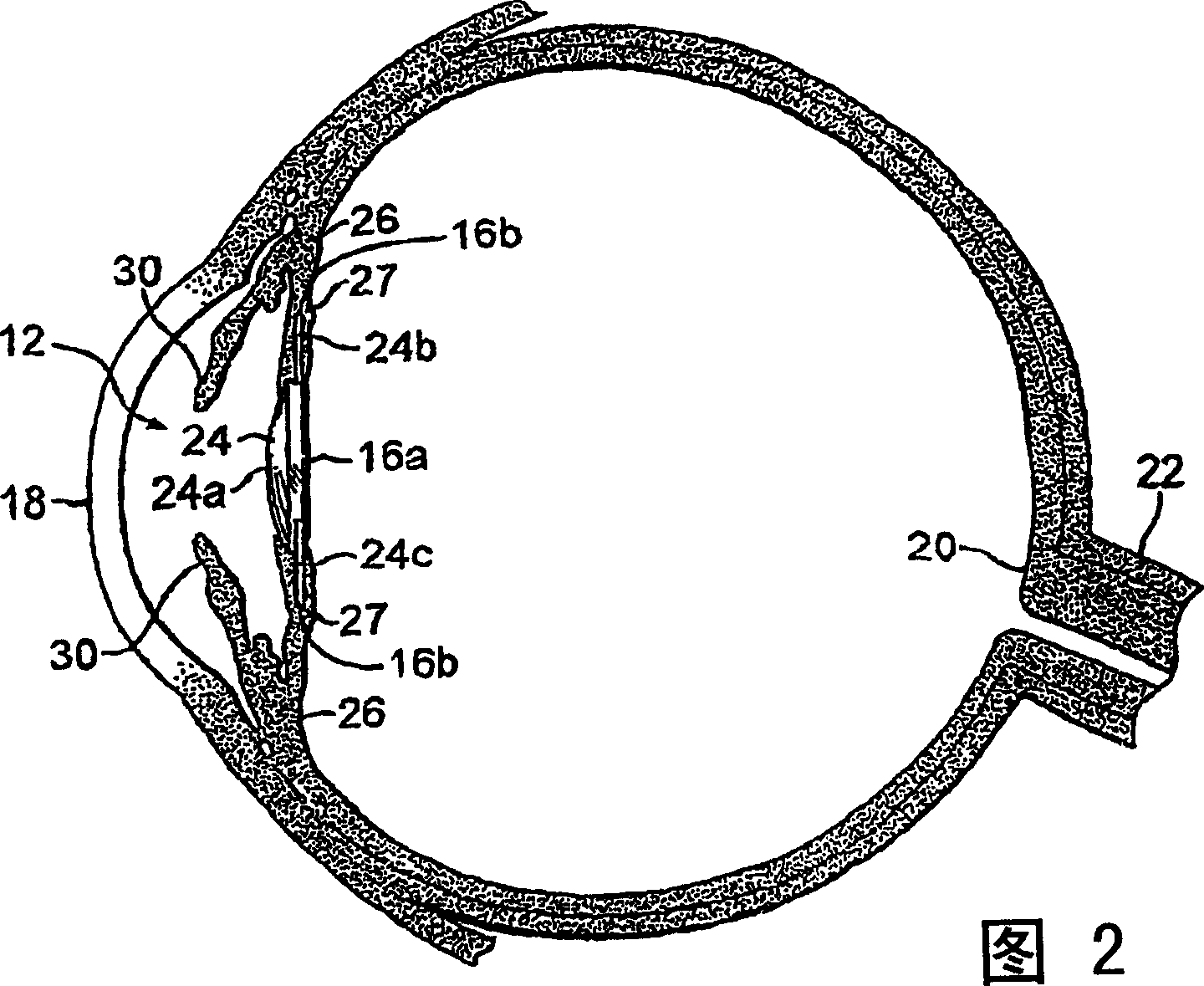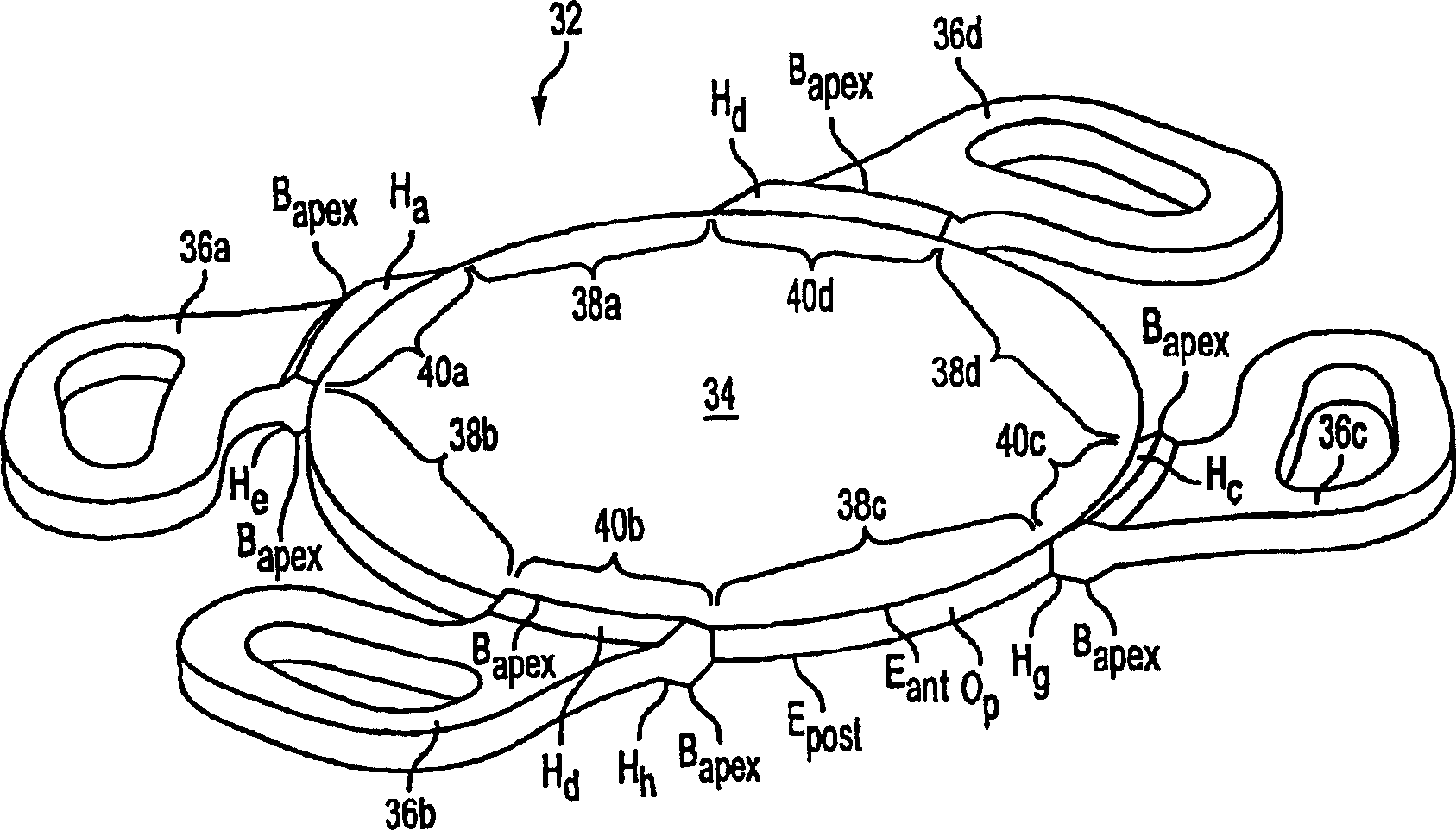Intraocular lens for inhibiting pco and aco
An intraocular lens, anterior and posterior surface technology for novel IOL applications
- Summary
- Abstract
- Description
- Claims
- Application Information
AI Technical Summary
Problems solved by technology
Method used
Image
Examples
Embodiment Construction
[0022] Referring to the drawings, the cross-sectional view in FIG. 1 shows that the human eye 10 has an anterior chamber 12 and a posterior chamber 14 separated by an iris 30 . The capsule 16 within the posterior chamber 14 holds the natural lens 17 of the eye. Light entering the eye passes through the cornea 18 to the lens 17 which directs and focuses the light onto the retina 20 at the back of the eye. The retina is connected to the optic nerve 22, which transmits the images received by the retina to the brain to render the image.
[0023] In an eye where the natural lens is damaged (eg, blurred by cataract), the natural lens is no longer able to properly focus and direct incoming light rays to the retina, and images become blurred. One well-known technique to remedy this condition involves removing the damaged lens and possibly replacing it with an artificial lens, known as an intraocular lens or IOL, such as prior art IOL 24 shown in FIG. 2 . While there are many differe...
PUM
 Login to View More
Login to View More Abstract
Description
Claims
Application Information
 Login to View More
Login to View More - R&D
- Intellectual Property
- Life Sciences
- Materials
- Tech Scout
- Unparalleled Data Quality
- Higher Quality Content
- 60% Fewer Hallucinations
Browse by: Latest US Patents, China's latest patents, Technical Efficacy Thesaurus, Application Domain, Technology Topic, Popular Technical Reports.
© 2025 PatSnap. All rights reserved.Legal|Privacy policy|Modern Slavery Act Transparency Statement|Sitemap|About US| Contact US: help@patsnap.com



